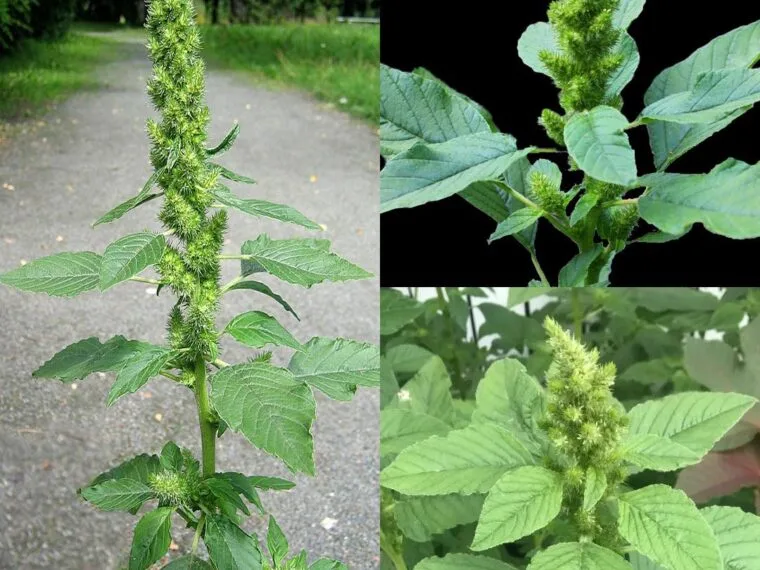In gardens and backyards across the world, pigweed (also known as Amaranthus or redroot pigweed) is often dismissed as an invasive, pesky weed that seems to pop up overnight. Most people yank it out without a second thought, eager to clear their vegetable patches or flower beds. However, this resilient plant, often thrown away as waste, is actually a hidden treasure trove of nutritional and medicinal benefits. Before you pull out and toss pigweed on your next gardening spree, take a moment to discover why this humble plant deserves more recognition.
What Is Pigweed?
Pigweed is a common plant found in many regions of the world, particularly in North and South America, Africa, and parts of Asia. It typically grows in disturbed soil, which is why it often appears in gardens, fields, and even alongside roads. With its spiny stems, broad leaves, and reddish-pink roots, pigweed may look unassuming, but it has been revered by many cultures for centuries.
Historically, Amaranthus was cultivated by ancient civilizations such as the Aztecs and Incas, who valued it for its nutritional properties. Today, it is considered both a wild edible and a superfood, rich in essential nutrients.
Nutritional Powerhouse
One of the most remarkable features of pigweed is its nutritional value. While many overlook it as a weed, pigweed is actually one of the most nutritious leafy greens you can find.
1. Rich in Protein
Unlike most common leafy greens, pigweed contains a significant amount of protein, including all the essential amino acids. This makes it particularly valuable for vegetarians and vegans who may struggle to find plant-based sources of complete protein. In fact, the seeds of pigweed, known as amaranth grains, are considered a superfood due to their high protein content.
2. Loaded with Vitamins and Minerals
Pigweed leaves are packed with essential vitamins like vitamin A, C, and K, which are vital for immune function, skin health, and bone strength. It is also a great source of calcium, iron, and magnesium. The high iron content, in particular, makes pigweed beneficial for people who suffer from anemia or low iron levels.
3. High in Fiber
The leaves of pigweed are rich in dietary fiber, which aids digestion and helps maintain healthy cholesterol levels. Adding pigweed to your meals can improve gut health and contribute to overall cardiovascular health.
4. Antioxidant Properties
Pigweed contains powerful antioxidants that help protect the body from oxidative stress and inflammation. These compounds reduce the risk of chronic diseases such as heart disease, diabetes, and even certain cancers.
Medicinal Benefits of Pigweed
Apart from its nutritional value, pigweed has been used in traditional medicine for a variety of ailments. Here are some ways it can benefit your health:
1. Anti-inflammatory Effects
In folk medicine, pigweed has been used to treat inflammation. The plant’s antioxidant compounds help reduce swelling and pain, making it useful for conditions like arthritis.
2. Digestive Aid
Pigweed leaves have mild laxative properties, making them effective in treating constipation. Additionally, they soothe the digestive tract and are used in some cultures to treat stomachaches and other digestive issues.
3. Wound Healing
The plant is also applied topically to treat skin conditions such as rashes, burns, and wounds. Its antibacterial and anti-inflammatory properties promote faster healing and prevent infections.
4. Diuretic Properties
Pigweed is also known to act as a diuretic, helping to flush out toxins from the body and supporting kidney function.
How to Harvest and Use Pigweed
If you’ve decided to give pigweed a try, harvesting it is easy! Look for young, tender leaves as they are the most palatable. You can sauté the leaves like spinach, add them to soups, or even use them raw in salads. The seeds can be harvested and used as a grain substitute, like quinoa, and can be ground into flour.
Pigweed Recipe Idea: Sautéed Pigweed
- Ingredients:
- 2 cups of young pigweed leaves
- 1 tablespoon olive oil
- 1 clove garlic (minced)
- Salt and pepper to taste
- Lemon juice (optional)
- Instructions:
- Wash and chop the pigweed leaves.
- Heat olive oil in a pan over medium heat.
- Add minced garlic and sauté for 1-2 minutes until fragrant.
- Add the pigweed leaves and sauté for 3-4 minutes until they wilt.
- Season with salt, pepper, and a dash of lemon juice if desired.
- Serve as a side dish or mix into grains like quinoa or rice.
A Word of Caution
While pigweed is a nutritious and versatile plant, it should be consumed in moderation. The plant contains oxalates, which in large amounts can contribute to the formation of kidney stones, especially in people who are prone to them. Cooking pigweed can reduce the oxalate content, so it’s recommended to cook the leaves before eating if you’re concerned.
Conclusion: Don’t Dismiss Pigweed!
Pigweed may be seen as an annoying weed by many, but it’s far from useless. With its impressive nutritional profile and medicinal benefits, this plant has much to offer. Next time you see pigweed sprouting in your garden, consider harvesting it rather than throwing it away. Incorporating it into your meals can provide a boost to your health and well-being.
